UK distributor and RC manufacturer RadioC has its newest Drone Lab lipo packs out on the market. The Drone Lab series is specifically designed for use in race quads. This review looks at the 1800 mAh version of the 4 cell pack.
Appearance
Some competitors almost started a contest on the „most beautiful“ lipo. Well RadioC is taking the other route, aware of the fact not to win any design prices. That said: The Drone Lab packs come in a simple black shrink wrap. A blue-ish sticker on the front – that’s it. As a purist I kind of like that approach.
Technical Design
The Drone Lab 50-100C pack is a standard 4S1P config flight pack for high power use. A foam layer on the front and back provides extra impact protection on the cell edges.
Build Quality: Very good. Pack feels very well made on the outside. Connection terminal looks solid.
Plugs: The Drone Lab pack comes with standard XT60 connectors* equipped.
Cables: RadioC uses 12 AWG wires on this packs. The high flexible silicon layer is rated up to 200°C. Cable length is about 10 centimeters.
Balacing plugs: Standard XT-system*. Balance wires are rather short (4,5 cm) which is a benefit in terms of getting them out of the prop-range on the aircraft. Main power line is coming out of the top, balancing wires are connected at the bottom.
Technical Details
Break-in documentation
The battery followed the standard break-in-process: The pack is charged at a rate of 1C until CV-phase ends with current of 1/10C. The break-in phase consists of four charging cycles at 1C and four corresponding discharges at 1 C / 4C / 10C and 20 C.
Anomalies: No anomalies during break-in.
Internal resistance measurements during break-in phase
| Cycle | Cell 1 | Cell 2 | Cell 3 | Cell 4 | Total |
| After first charge | 2.0 | 2.1 | 2.0 | 2.0 | 8.1 |
| After second charge | 1.8 | 2.2 | 1.8 | 2.1 | 7.9 |
| After third charge | 2.0 | 1.7 | 2.4 | 1.9 | 8.0 |
| After fourth charge | 2:0 | 1.5 | 2.1 | 2.0 | 7.6 |
Charging process
CV-Phase is relatively short on this cell type. Balancing in normal mode took 3:29 min. Cell drift during charge was unobtrusive. This is for 1C charge (1,8 A).
Load Testing
The main part of this battery test will consists of different load test settings showing the battery performance. Constant load testing is used to judge the advertised C-ratings as well as look at cell drift under high loads. We also check on internal resistance once more. Next up is the dynamic current test, which simulates a „real“ flight with changing (=dynamic) loads. For test methodology please check the dedicated methodology page!
Constant Load Testing
Constant load testing follows a certain load pattern of different constant currents. Base load is 10 C. Current pulses at 50 C, 35 C, 20 C and 30 C are maintained for time intervals between 10 and 20 seconds. For more details please refer to the test methodology page.
Capacity Usage
During this test the pack delivered 1233 mAh. This is 68,5 % of nominal capacity. A solid value.
Average cell voltages
The following table lists the average voltages per cell, of the total pack, as well as the averaged value per cell as fraction of total voltage during phase of active load.
| Cell 1 | Cell 2 | Cell 3 | Cell 4 | Total | Average per cell | |
| Avg. Voltages | 3.716 V | 3.734 V | 3.725 V | 3.733 V | 14.908 V | 3.727 V |
Just looking at average values the Drone Lab pack performs good. All cells stayed well above 3,7 V on average. An average value above 3,75 V / cell can be considered very good.
Focus Voltages
Exceptionally interesting when testing a battery under a constant load for a longer period of time: the lowest voltage per cell just before load impulse is disabled. On top, you should have look at voltage recovery rate, that is: how fast do cell voltages rise again once load impulse is cut.
| Phase | Cell 1 | Cell 2 | Cell 3 | Cell 4 | Total |
| End of 50 C | 3.428 V | 3.470 V | 3.483 V | 3.531 V | 13.912 V |
| End of 35 C | 3.429 V | 3.468 V | 3.466 V | 3.506 V | 13.869 V |
| End of 20 C | 3.266 V | 3.387 V | 3.335 V | 3.331 V | 13.319 V |
| End of 30 C | – | – | – | – | – |
The average cell voltage stability on the DroneLab pack can be considered good. Some cells fell below 3,5 V during the first two current pulses.
Average voltage recovery per second
Those values are specific to the test setting and not valid for the pack in general! Still they allow an estimated guess about how fast voltages rise again after current spikes.
| Cell 1 | Cell 2 | Cell 3 | Cell 4 | Total | |
| Avg. Recovery | 0.0532V / s | 0.0472 V / s | 0.0453 V / s | 0.0378 V / s | 0.1835 |
Even though voltages dropped down pretty strong during current pulses the recovery rates show that the pack is able to recover voltage pretty fast when switched from current pulse to base load.
IR-Measurement
IR measurement is conducted using the four current pulses. Resistance for each cell is calculated in all four discharge phases. Shown values are averaged to cancel out different temperature points due to different discharge states during measurements.
| Cell | 1 | 2 | 3 | 4 | Total |
| Resistance [mΩ] | 3.35 | 2.86 | 2.77 | 2.9 | 11.05 |
Interpretation: The internal resistance of 2.97 mΩ average per cell indicates a „true“ C-rating of around 34 C (60.3 A). This is on the conservative side and represents a current draw that will make the pack last for a long time. The pack had no problems delivering during high C discharge pulses. Voltage dropped quiet a bit below 3,5 V on this test for 50 C and 35 C loads, though.
Cell drift under load
| Discharge Phase | 50 C | 35 C | 20 C | 30 C |
| Max Cell drift (V) | 0,011 V | 0,077 V | 0,121 V | – |
Key Temperature Facts
Temperature Development
All temperature probes reported values below cut-off point at 58°C. Max. temp during discharge was around 55,0 °C on top of pack. The battery had to be actively cooled down right after cut-off to prevent further temperature increase. Note that heating of stressed LiPo packs will continue for some more time even when load is cut.
Market Comparison
The following chart shows all reviewed LiPos in the same product segment for direct comparison of performance. Higher values under load are better.
Constant 25 C Discharge
Pretty much a standard benchmark in the LiPo industry.
Cut-Off /warning value for this battery should be chosen 3,45 V minimum. After this point voltage drops quick. The battery provided 1163 mAh (64,6 %) during the 25 C discharge.
Market Overview
Comparison of different reviewed 1800 mAh batteries under 25 C load.
Dynamic Load Testing
The dynamic load testing setting consists of two separate discharge scenarios that have been developed of two different real-life FPV flights. Pattern one represents a high speed low proximity flight around the open field with some hovering to the end. Average load is around 22 A. Second pattern is a free-style flight around trees in the park with some current spikes near 70 A. Average load on this flight is around 13 A due to longer floating periods.
Capacity Usage
During the test of pattern 1 the pack delivered 1195 mAh. This is 66.38 % of nominal capacity. In patter 2 testing 1260 mAh (70,0 %) could be used until first cell reached cut-off voltage.
Market Comparison
The following charts give an overview of all tested packs in the 1800 mAh class so far.
The last chart of this review sums up the usable capacity during all four load scenarios. Please note that this is only the capacity consumed by the electronic load! There are losses due to heating of the pack, which could be approximated (see testing methodology page). All four tests are cut when any cell goes below cut-off voltage of 3,3 V (or pack goes above 58 °C on any of the three probes). If you would push further and go down to 3,0 V/cell you will be able to squeeze out some mAh more, but at the cost of excessive heat generation and shortening of pack life-span. This value will most likely differ from what you get when flying on a quad as most people don’t monitor voltage on a per cell basis and therefore don’t even notice if voltage drops below 3,3 V/cell during punsh-outs (what’s not necessarily a good thing, though). For comparison, used capacity until 3,3 V/cell is reached is the base line in all battery reviews on Drone-Zone.de.
Conclusion
The DroneLab 4S 1800 mAh 50-100 C battery is a usual sized pack with a decent capacity to weight ratio of 9.0 mAh/g. The measurements are standard for the 1800 mAh class. Overall build quality is good. The design is best described as modest. Perfect for everybody looking to put a black pack on there full carbon style mini quad! Average voltage stability is good on this pack. Nevertheless, one should be aware of the relatively early voltage drop at the end. Once cell voltage goes below 3,5 V its time to come in for landing quiet fast. Usable cell capacity under real-life flight setting is a little below average, but alright. Competitors manage to squeeze out a little more. As most of the packs in this performance class the C rating is a little over the top. If long term continuous currents are needed, make sure to stay within the real rating of around 34 C. Nevertheless, the pack is able to handle short currents spikes way above this (up to 50 C). To higher loads the back will respond with a good amount of voltage sag. Pricing of the DroneLab 4S 1800 mAh 50-100 C battery is hot. For around 26 € this pack is highly competitively priced and almost 10 Euros cheaper than some of its competitors products. The great price might even let some buyers overlook the rather early performance decrease to the end of the discharge cycle. Quality wise the DroneLab pack is great for its price tag, if you don’t push your throttle stick hard all the time.
Other packs of this line up tested:




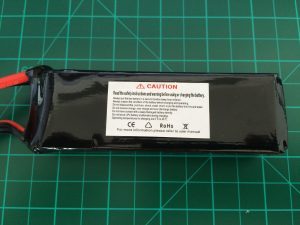
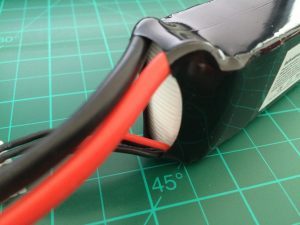
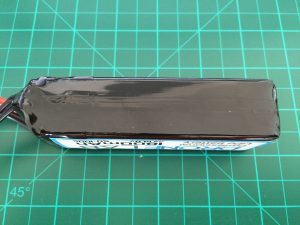

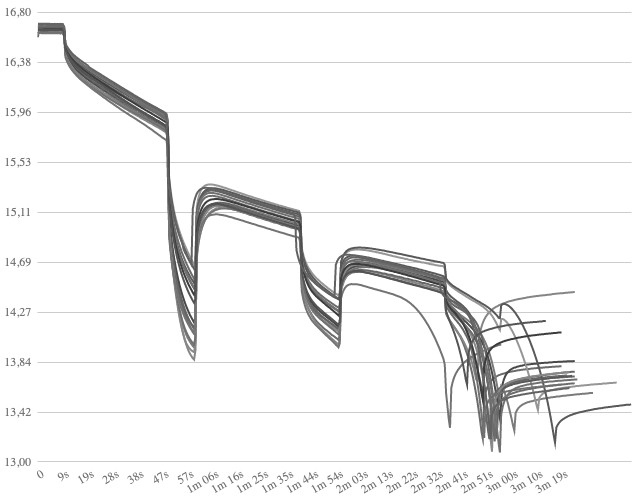
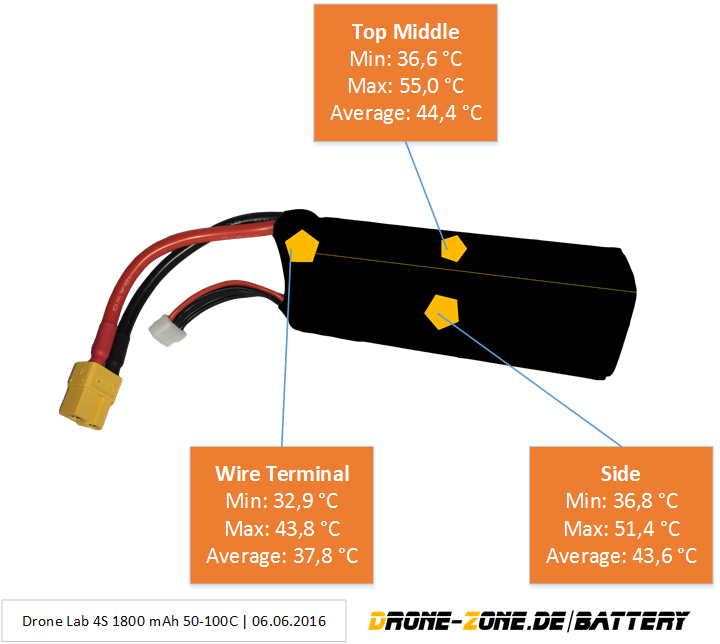

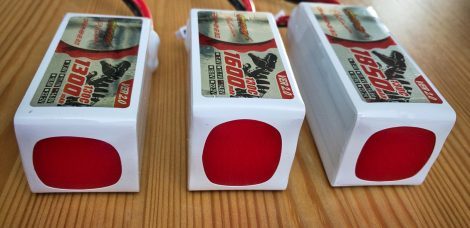
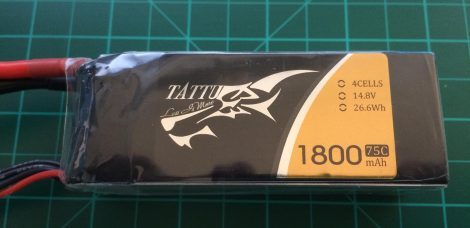
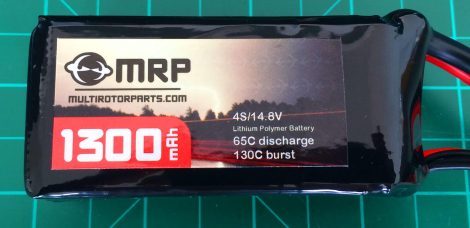
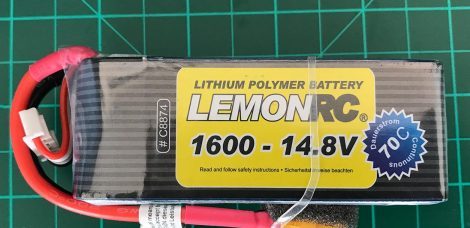

Great testing and article. But I got Little unsure when you mention LemonRC under Plugs and Cables, otherwise great article.
Hi Tobias,
thank you for your feedback. I mixed something up there, indeed. It’s fixed!